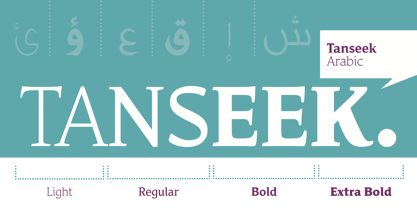Seleccione este tipo de licencia cuando esté desarrollando una aplicación app para iOS, Android o Windows Phone, y vaya a incrustar el archivo en el código de su aplicación móvil. va a incrustar el archivo fuente en el código de su aplicación móvil.
Tanseek Traditional™
por Monotype


- Aa Glifos
-
¡Mejor PrecioPaquetes de familia
- Estilos individuales
- Especificaciones técnicas
- Licencias
Por estilo:
$169.49
Paquete de 4 estilos:
$677.99
Tanseek Traditional Volume
4 fuentesPor estilo:
$169.49
Paquete de 4 estilos:
$677.99
Sobre la familia Tanseek Traditional Fuente
Diseñadores: Richard Dawson, Dave Farey, Arlette Boutros, Mourad Boutros
Editorial: Monotype
Fundición: Monotype
Propietario del diseño: Monotype
MyFonts debut: null

Acerca de Monotype
La Biblioteca Monotype es una de las mayores y más completas colecciones de tipos de letra del mundo, con diseños originales de importancia histórica y una nueva gama de diseños contemporáneos y de moda fuentes. La Biblioteca Monotype incluye miles de clásicos atemporales, revivals artesanales y diseños originales de muchos de los diseñadores tipográficos y fundiciones más innovadores de la historia. Esta biblioteca distintiva y galardonada de primera calidad fuentes ofrece a marcas y diseñadores una selección amplia y fiable de tipos de letra para una tipografía expresiva en impresión y en pantalla. La página de la Fundición Premium puede consultarse aquí.
Seguir leyendo
Leer menos